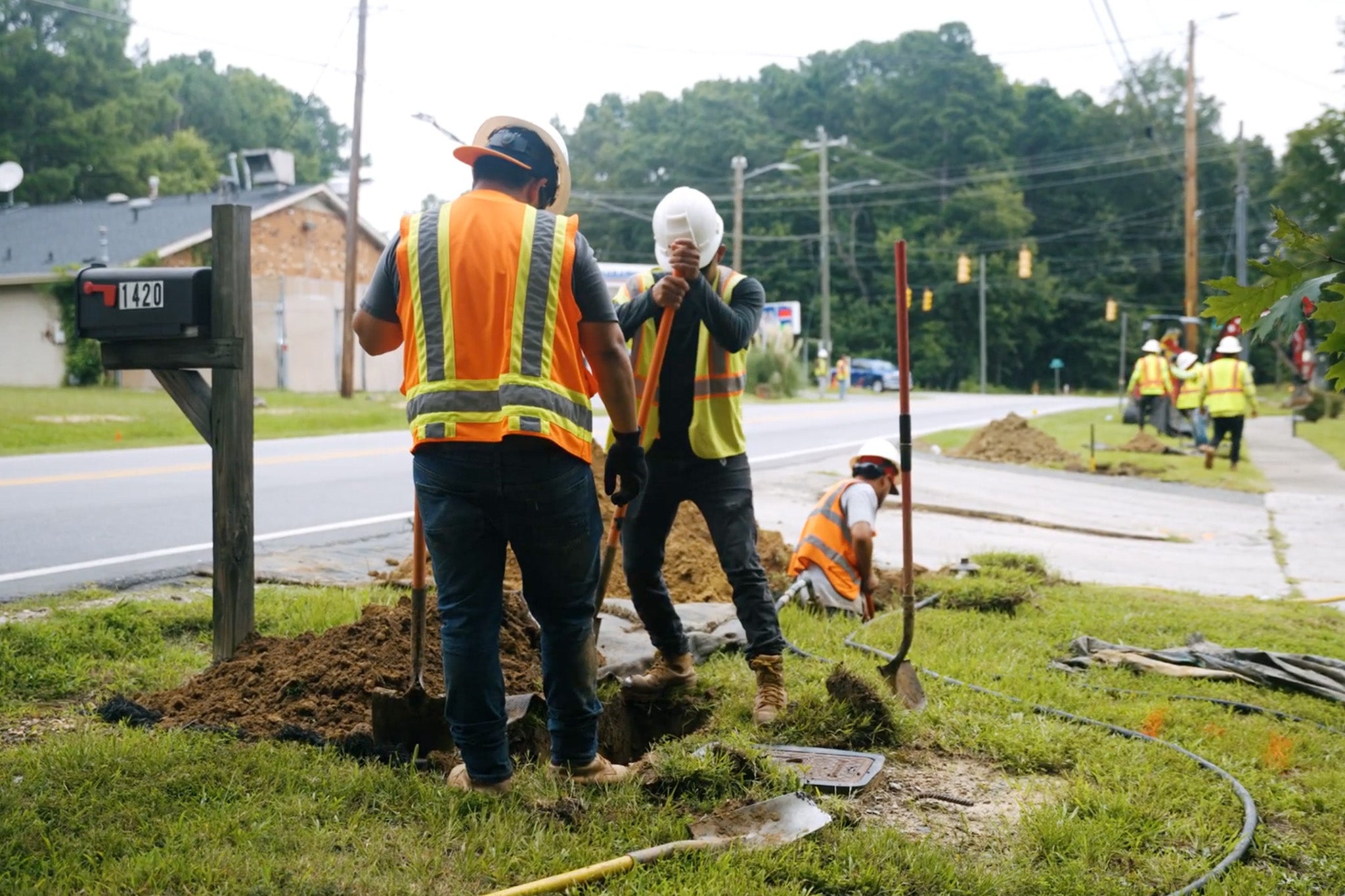Many services are installed underground, from gas and water to electricity and communication lines. Since fiber optic lines are constructed similarly, knowing the location of existing services before digging underground is crucial to avoid disruptions, potential danger and environmental consequences. Learn how public utility lines are located and why it’s one of the most important steps while constructing and installing a fiber internet network.
Why is Utility Locating Important for Fiber Construction?
Properly marking and locating underground utilities ensures the fiber construction crew doesn’t interfere with your current buried services. By taking this precautionary step, your and your neighbors’ services won’t be interrupted and the process can run smoothly with minimal impact.
Utility locating helps to:
- Reduce environmental impact
- Prevent service interruptions
- Mitigate safety hazards
How is Utility Locating Done?
While Lumos crews are professionals at constructing a fiber internet network for your home or business, we make sure the process is done right the first time by connecting with local utility companies before we dig. Here’s how we ensure your home is protected throughout the entire process:
1. Site Survey and Planning
While services are being constructed, property records, blueprints and utility maps are used to visualize where underground services are likely located and allow the crews to develop an initial game plan for where the fiber optic line can go. Depending on the date of the available documentation, it may be inaccurate. That’s where the utility experts come in.
2. Contact Utility Providers
One of the duties of public utility companies is to come to your home to mark underground lines before a project at no cost. While they can mark water, gas, communication, sewage and public electric lines, they don’t mark your private lines, such as a sprinkler system or invisible pet fence. If you have these, you may want to hire a private locator.
3. Marking and Mapping
To accurately map the obstacles below ground, the utility company uses advanced technology, ensuring the fiber installation crew knows exactly where to avoid them. Ground Penetrating Radar is the most effective tool for mapping the subsurface and can detect lines not picked up by electromagnetic locating or metal detecting.
4. Fiber Construction
Once all utilities are marked, the fiber construction crews can get to work. They’ll dig a trench or use a boring machine to lay the new line. After the line is laid and the crew confirms the strength of the fiber signal, we will alert you when fiber internet is available at your address!

What Do the Flag Marking Colors Mean?
When the utility company leaves your property, you’ll notice different colored flags throughout your yard. If you’re curious about what lies below, here’s what each of the colors indicates:
- Blue: Water and irrigation lines
- Yellow: Gas, oil, steam, petroleum and other gaseous material lines
- Orange: Communication, cable TV, alarm systems and signal lines
- White: Proposed excavation
- Pink: Temporary property line markings
- Green: Drainage and sewage lines
- Red: Electric power lines
Trust Lumos for Proper Fiber Internet Network Construction
At Lumos, we’re committed to more than just providing ultra-fast, always-reliable 100% Fiber Optic Internet2. Every step of the way, we ensure your fiber internet construction is completed properly from the start, with everyone’s safety as the top priority.
Check for Lumos Fiber near you and discover how the fastest internet in town can enhance your digital life.


